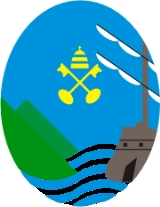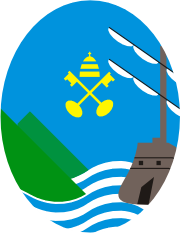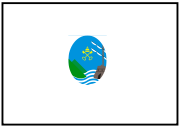
Zumaia
Encyclopedia


Spain
Spain , officially the Kingdom of Spain languages]] under the European Charter for Regional or Minority Languages. In each of these, Spain's official name is as follows:;;;;;;), is a country and member state of the European Union located in southwestern Europe on the Iberian Peninsula...
in the Basque Country
Basque Country (autonomous community)
The Basque Country is an autonomous community of northern Spain. It includes the Basque provinces of Álava, Biscay and Gipuzkoa, also called Historical Territories....
. The Mayor
Mayor
In many countries, a Mayor is the highest ranking officer in the municipal government of a town or a large urban city....
is Iñaki Agirrezabala, member of Eusko Alkartasuna
Eusko Alkartasuna
Eusko Alkartasuna is a Basque nationalist political party operating in Spain and France. The Basque language name means Basque Solidarity and abbreviated as EA. The party describes itself as a Basque nationalist, democratic, popular, progressive and non-denominational party...
and Gazte Abertzaleak
Young Patriots (Basque Country)
Young Patriots is since 1988 the youth wing of the Basque political party Eusko Alkartasuna . Gazte Abertzaleak is founder member of the EFAY....
.
The town has two beaches (Itzurun and Santiago), which are of interest to geologists because they are situated among the longest set of continuous rock strata in the world. Known locally as the "flysch
Flysch
Flysch is a sequence of sedimentary rocks that is deposited in a deep marine facies in the foreland basin of a developing orogen. Flysch is typically deposited during an early stage of the orogenesis. When the orogen evolves the foreland basin becomes shallower and molasse is deposited on top of...
" they date from the mid-cretaceous period to the present, a time period of over 100 million years. The K-T boundary is present at the Itzurun beach, and fossils can be found, notably of ammonite
Ammonite
Ammonite, as a zoological or paleontological term, refers to any member of the Ammonoidea an extinct subclass within the Molluscan class Cephalopoda which are more closely related to living coleoids Ammonite, as a zoological or paleontological term, refers to any member of the Ammonoidea an extinct...
s. The strata stretches along a distance of about 8 km, between the towns/beaches of Deba and Getaria, with Zumaia lying in the middle.
The town is also the home/museum of the painter Ignacio Zuloaga
Ignacio Zuloaga
Ignacio Zuloaga y Zabaleta was a Basque Spanish painter, born in Eibar, near the monastery of Loyola. He was the son of metalworker and damascener Plácido Zuloaga and grandson of the organizer and director of the royal armoury in Madrid.-Biography:In his youth, he drew and worked in his father's...
. Exhibits include works by El Greco
El Greco
El Greco was a painter, sculptor and architect of the Spanish Renaissance. "El Greco" was a nickname, a reference to his ethnic Greek origin, and the artist normally signed his paintings with his full birth name in Greek letters, Δομήνικος Θεοτοκόπουλος .El Greco was born on Crete, which was at...
, Rivera
Diego Rivera
Diego María de la Concepción Juan Nepomuceno Estanislao de la Rivera y Barrientos Acosta y Rodríguez was a prominent Mexican painter born in Guanajuato, Guanajuato, an active communist, and husband of Frida Kahlo . His large wall works in fresco helped establish the Mexican Mural Movement in...
, Zurbarán and Goya. Across the street there is a museum of craft and hand-crafted products of Laia
Laia (tool)
The laia is a two-pronged type of foot-plough used in the Basque Country. Aside from being a farming implement, it is also used in the associated laia competitions. The people using a laia are referred to as laiariak in Basque.-Etymology:...
. Within the city centre, the Basque-style Gothic church of San Pedro can be found. It has a temple with a magnificent reredos by Juan de Antxieta, the only work by this Basque sculptor found in Gipuzkoa.
Zumaia is located at the point where the Urola and Narrondo rivers come together. The origins of the town can be traced by its ancient monastery. In the Middle Ages, the people that lived in the Sehatz valley having to endure the continuous attacks of pirates and pillagers, fortified the city. The church today retains the relic of its defensive appearance.



